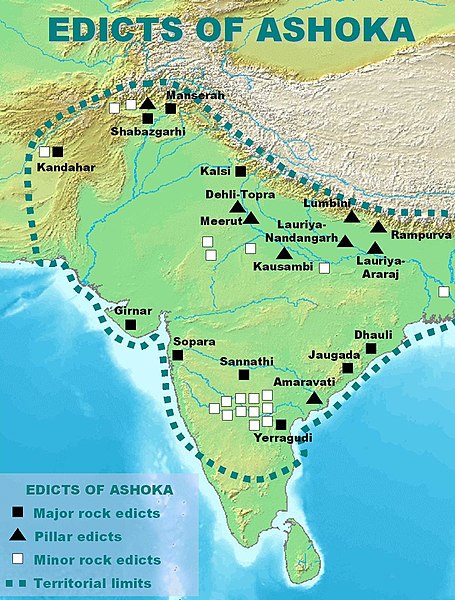900 319 0030
enquiry@shankarias.in
Three Ashokan era edicts were recently found in Delhi.
|
Mauryan Empire |
|
All rock edicts are inscriptions but all inscriptions are not rock edicts

|
Major Rock Edict |
About |
|
I |
|
|
II |
|
|
III |
|
|
IV |
|
|
V |
|
|
VI |
|
|
VII |
|
|
VIII |
|
|
IX |
|
|
X |
|
|
XI |
|
|
XII |
|
|
XIII |
|
|
XIV |
|
|
Pillar Edict |
About |
|
I |
|
|
II |
|
|
III |
|
|
IV |
|
|
V |
|
|
VI |
Dhamma policy of the State (welfare of the people). |
|
VII |
Ashoka’s work for fulfilling Dhamma. Tolerance for all sects. Also, about Dhamma Mahamatta |
|
Inscription / Edict |
About |
|
Allahabad – Kosam/Queens Edict/Kausambi or Schism Edict |
Ashoka asks the members of the Sangha to refrain from causing division in the ranks. |
|
Kandahar Inscription |
It is a famous bilingual edict in Greek and Aramaic. |
|
Kalinga Edict |
Mentions “all men are my children” |
Reference